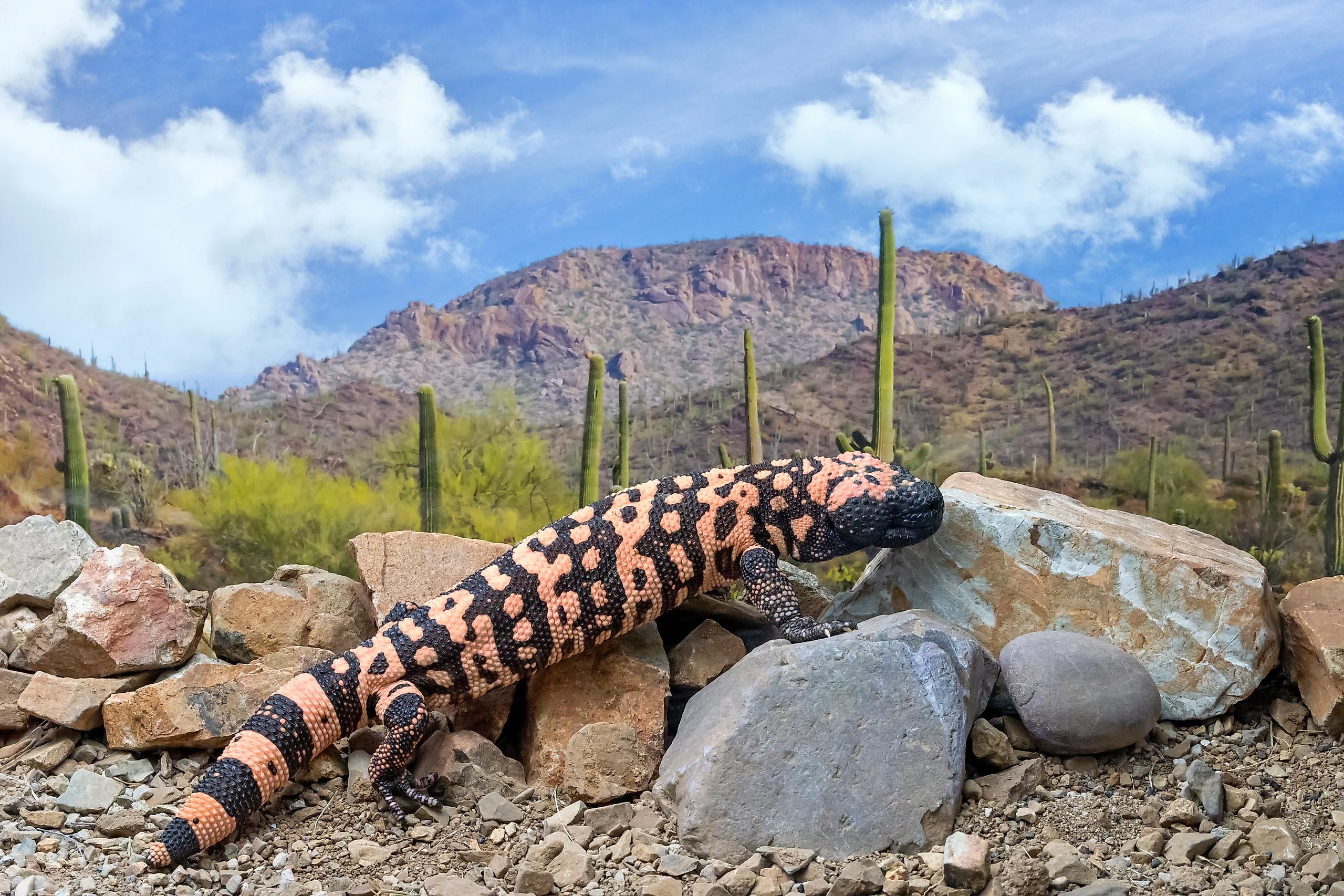
Which US State Has The Most Venomous Reptiles?
Reptiles are crucial components of many ecosystems, acting as predators, prey, and even as pollinators of plants. If you wonder how to distinguish reptiles from other animals like amphibians, check out the characteristics of reptiles. In general, they are cold-blooded animals with dry, scaly skin, the ability to lay eggs, and four-legged stances. Snakes, lizards, turtles, crocodiles, and alligators are a few typical examples of reptiles. While most of them are safe, there are a lot of dangerous species, especially venomous ones. If you would like to know which US state has the most venomous reptiles, keep on reading.
What Venomous Reptiles Can You Meet In The US?
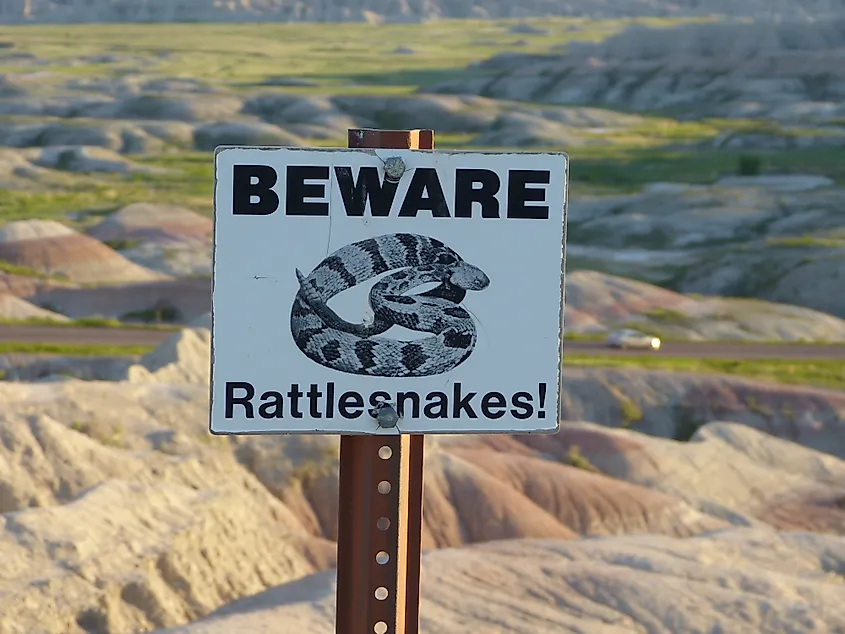
Among venomous reptiles, in the US, you can find snakes and lizards. There are no venomous turtles or alligators. Reptile species are widespread mostly in southern and southwestern regions of the country as they prefer dry and warm environments. Rattlesnakes, copperheads, and cottonmouths (also known as water moccasins), found in many parts of the country, are the most prevalent venomous snakes in the US. Regarding lizards, you can meet the Gila monster in the Southwest. There are only two venomous lizards in the world, and the Gila Monster is one of them. Although most of these reptiles will not attack people unless provoked, it is advisable to remain cautious and keep away from any needless interactions with them.
The State With The Most Venomous Reptiles
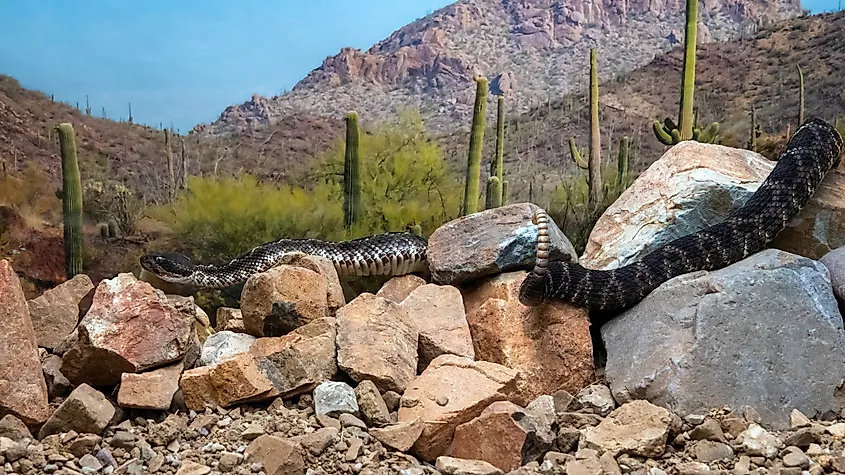
Arizona is a US record-breaker in the number of venomous reptiles and venomous animals overall. Its deserts, woodlands, and mountains make it a perfect place for rattlesnakes, coral snakes, and the Gila monster. Arizona is home to 13 different rattlesnake species that are currently recognized. Several kinds of rear-fanged snakes and one species of coral snake also live in Arizona. Anybody visiting the state must be aware of the risks posed by these critters and have a basic understanding of how to safeguard themselves.
Gila Monsters
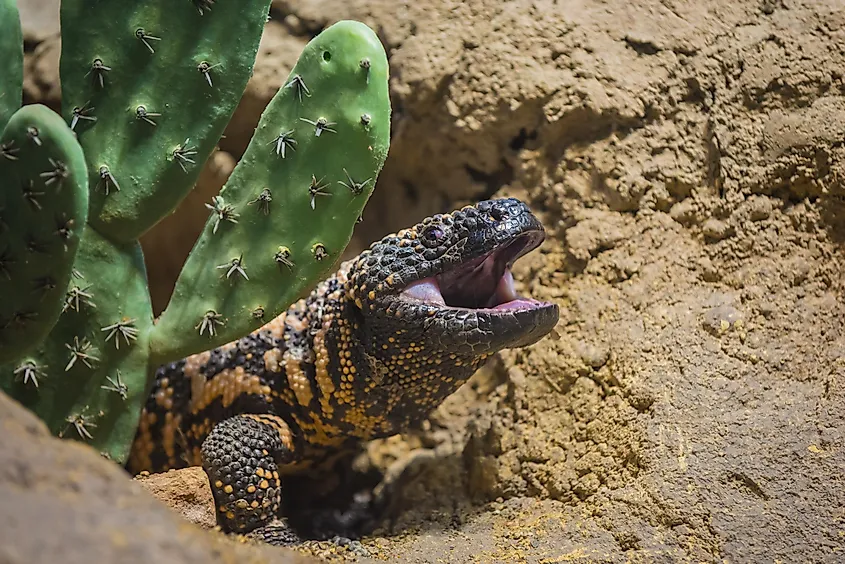
Arizona is home to venomous lizards known as Gila Monsters, which live in the deserts of the southwest of the United States. With their bright orange and black colors and thick, stocky bodies covered in scales that resemble beads, they have a striking look. Although having a venomous bite, Gila Monsters are often placid, slow-moving creatures that prefer to stay out of trouble. Being mostly nocturnal, they spend a large portion of the day in burrows before coming out at night to hunt for small animals, birds, and eggs.
Arizona poison control centers attend to 12 to 16 bites from Gila monsters annually. In the past century, no documented deaths have been directly attributable to a Gila monster's bite. As a protected species in Arizona, Gila Monsters cannot be killed, harassed, or collected without a license.
Rattlesnakes
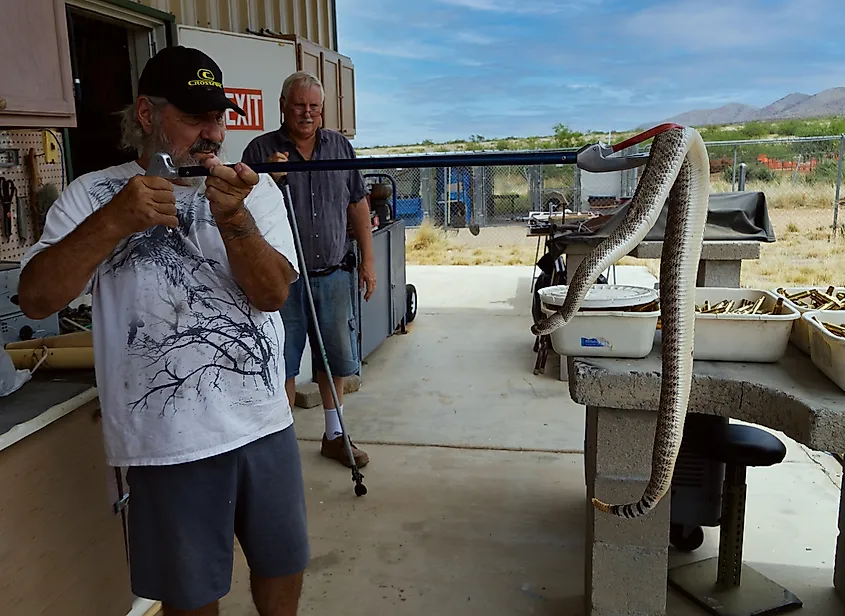
Arizona is home to over a dozen rattlesnake species found in the state. These reptiles are perhaps one of the most fascinating and feared creatures. The rattle on rattlesnake's tail, which consists of a sequence of interlocking pieces, is what gives rattlesnakes their unique sound when they move. These venomous snakes live in various habitats, from deserts to forests.
Western diamondback rattlesnakes are among the most widespread species in Arizona. These snakes have a diamond-shaped pattern on their back and may reach lengths of six feet. You may often spot them lounging on rocks or logs in deserts or grasslands.
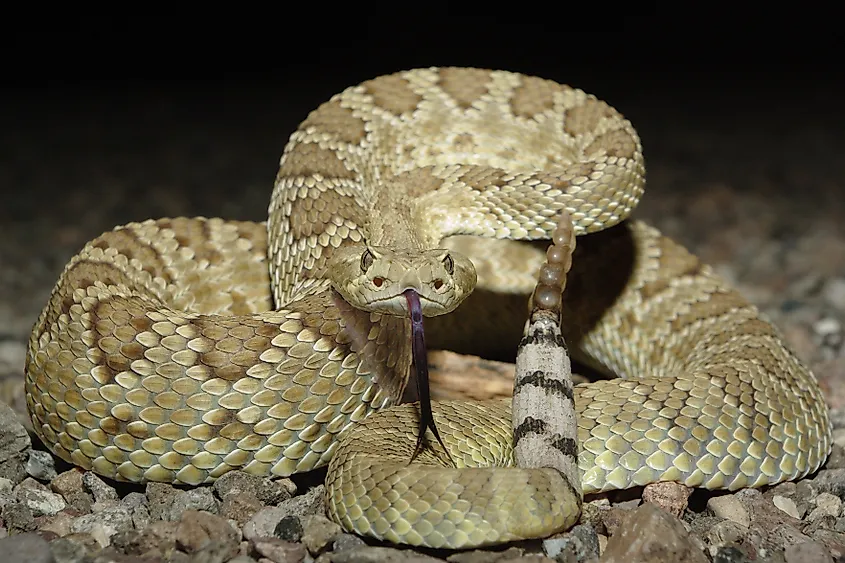
The Mojave rattlesnake is another species that frequently inhabit Arizona. It is one of the most venomous rattlesnakes in the US. Compared to diamondbacks, these snakes have a more subdued coloring, with a body that is greenish-gray or brownish-gray and a tail with a row of light-hued rings.
Rear-Fanged Snakes
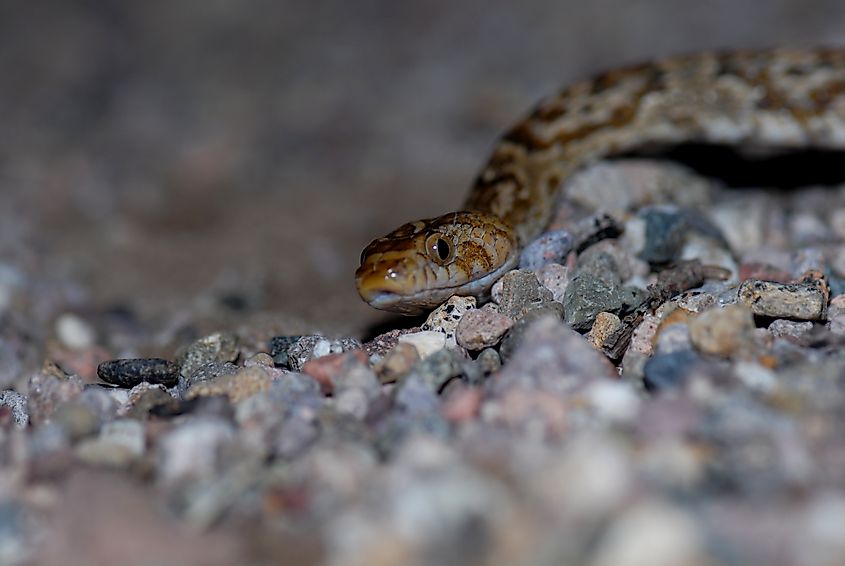
Some of the rarest and most fascinating species of rear-fanged snakes in the world live in Arizona. Rear-fanged snakes are a group of snakes that possess enlarged teeth at the back of their mouths. Although these teeth aren't as strong as those of poisonous snakes like vipers or cobras, they can nonetheless venomously attack their prey or predators. The majority of rear-fanged snakes in Arizona are small and have weak venom. Only the lyre and vine snakes are large enough to sting people with venom. There was no human death because of these creatures.
Lyre Snakes are among the most distinctive rear-fanged snakes in Arizona. These snakes stand out for their distinctly flattened heads and lyre-shaped tails. Its venom sedates its food, which generally consists of lizards and small rodents.
Coral Snake
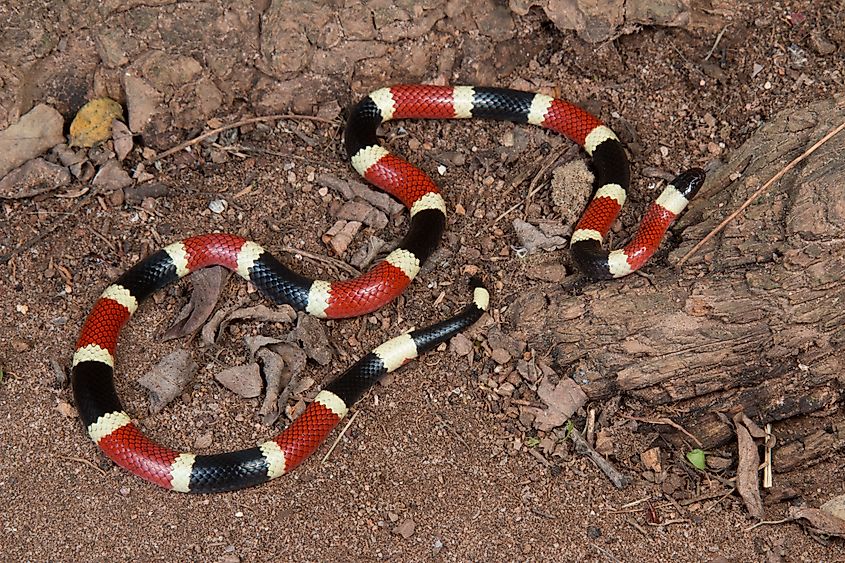
The Sonoran coral snake is one species of coral snake found in Arizona. These reptiles are typically under two feet in length and are most active at night. You will identify the Sonoran coral snake by its striking colors – bright red, yellow, and black bands run along its body, with the red and yellow bands always touching each other. Coral snakes prefer to live in regions with lots of cover, such as rocky outcrops, bushes, and downed logs. You can frequently see them close to water sources like ponds or streams.
Coral snakes are highly venomous but are not hostile toward people; they typically only bite when threatened or provoked. Nonetheless, their venom is highly potent and, if untreated, can result in severe neurological and respiratory problems, and even death.
Arizona has the highest number of venomous reptiles in the US. This state is home to various venomous snakes, including rattlesnakes (such as the Western Diamondback Rattlesnake, Mohave Rattlesnake, and Sidewinder), as well as coral snakes and Gila Monsters. Although it is unlikely to come into contact with one of these creatures, it is nonetheless necessary to be aware of their presence and take safety measures to keep away from them. Enjoy Arizona's natural beauty by being aware and taking appropriate measures.











